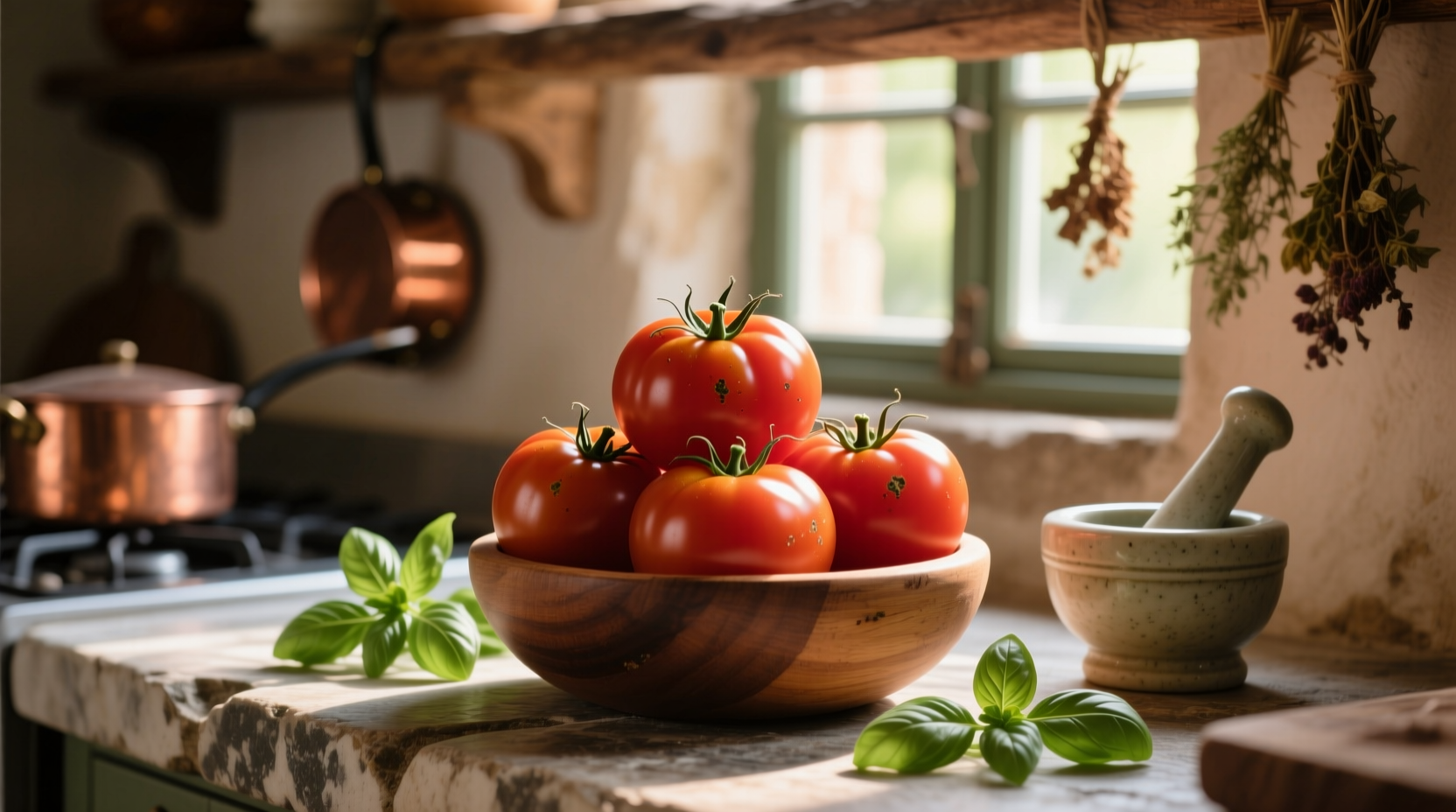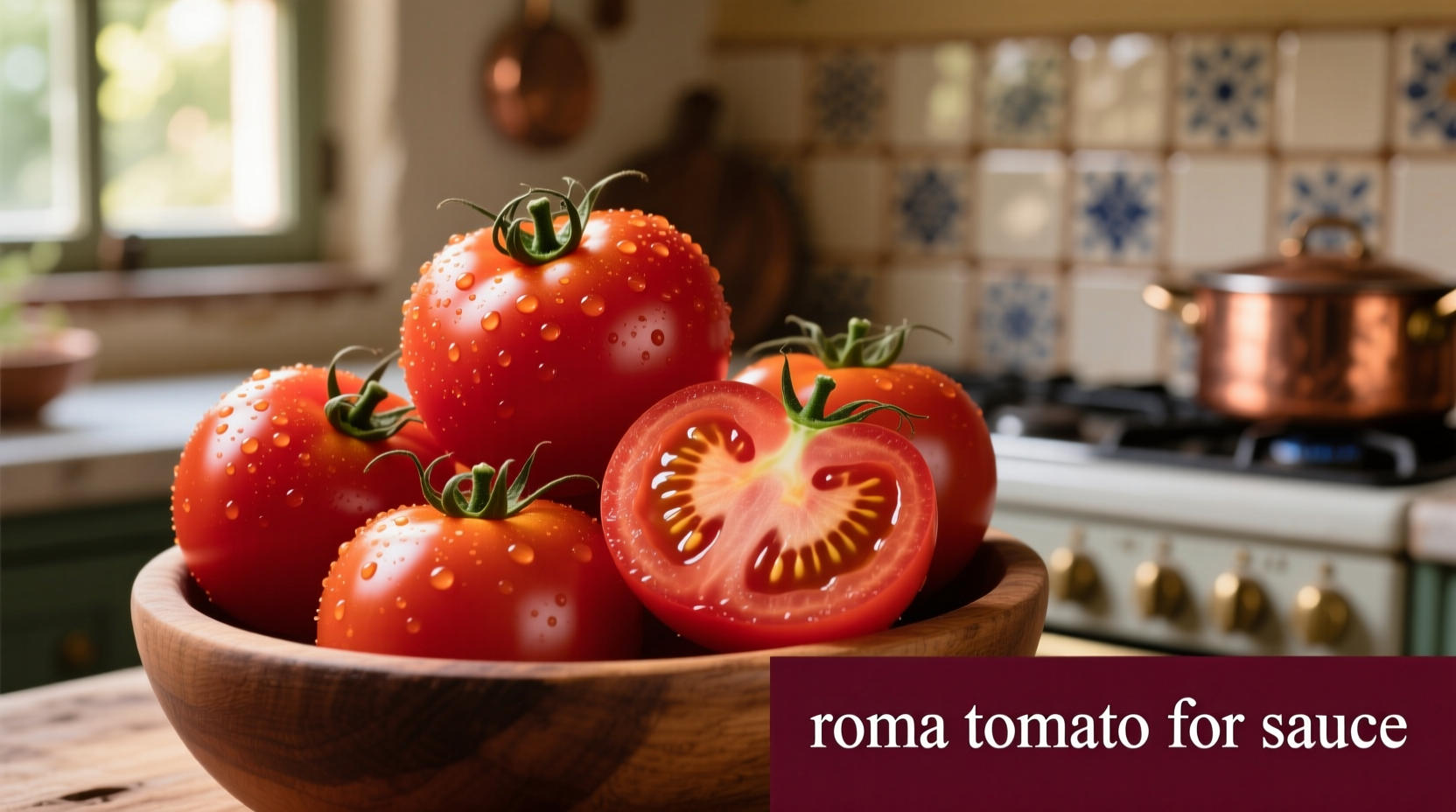When you're standing in the produce section wondering which tomatoes will transform your pasta sauce from watery disappointment to restaurant-quality perfection, Roma tomatoes should be your first choice. These oblong, meaty tomatoes deliver professional results for home cooks seeking rich, flavorful sauces with minimal effort.
Why Roma Tomatoes Dominate Sauce-Making
The secret to Roma tomatoes' sauce superiority lies in their structural composition. Unlike juicy slicing tomatoes bred for fresh consumption, Romas feature dense, seedless flesh with minimal gel surrounding the seeds. This translates to higher solid content per pound - crucial when reducing sauces.
According to USDA agricultural research, Roma tomatoes contain approximately 92-93% water compared to 97-98% in standard round tomatoes. That seemingly small 4-5% difference represents significant time savings in the kitchen. When making a basic quart of sauce, you'll spend 30-40 minutes less reducing liquid with Romas versus standard varieties.
| Tomato Variety | Water Content | Seeds per Fruit | Sauce Yield (per pound) | Best Sauce Application |
|---|---|---|---|---|
| Roma | 92-93% | 12-15 | 1.5 cups | All-purpose tomato sauce |
| San Marzano | 94-95% | 8-10 | 1.2 cups | Neapolitan pizza sauce |
| Globe (Standard) | 97-98% | 90-110 | 0.75 cups | Not recommended |
| Cherry | 95-96% | 50-70 | 0.5 cups | Sweet finishing sauces |
Selecting Perfect Romas for Sauce
Not all Roma tomatoes perform equally in sauces. For optimal results, follow these selection guidelines:
- Color consistency - Choose deeply red specimens without green shoulders
- Firmness - Slight give when gently squeezed indicates peak ripeness
- Weight - Heavier tomatoes contain more flesh relative to skin
- Shape - Look for uniform oval shape without excessive ribbing
Avoid tomatoes with cracks or soft spots, which indicate overripeness and potential flavor dilution. The University of California Cooperative Extension notes that Romas harvested at "breaker stage" (when first color appears) develop superior flavor compounds compared to vine-ripened specimens when used for cooking.

Professional Sauce-Making Techniques with Romas
Maximize your Roma tomatoes' potential with these chef-developed techniques:
Preparation Methods
Unlike other varieties, Roma tomatoes rarely require peeling for sauce-making. Their thinner skin breaks down completely during cooking. However, for ultra-smooth sauces:
- Score an "X" on the blossom end
- Blanch in boiling water for 30 seconds
- Transfer immediately to ice water
- Skin will slip off effortlessly
For seed removal (recommended for restaurant-style sauces), cut tomatoes in half horizontally and squeeze gently over a bowl. The seeds and excess gel will release while retaining maximum flesh.
Cooking Process Optimization
The natural acidity of Roma tomatoes creates perfect pH balance for safe canning without additional citric acid. When cooking:
- Start with cold锅 - adding tomatoes to cold oil helps extract flavor compounds
- Maintain gentle simmer (180-200°F) rather than rapid boil
- Stir occasionally with flat-edged spoon to prevent sticking
- Reduce uncovered for thicker consistency, covered for brighter flavor
Culinary science research from the Culinary Institute of America demonstrates that Roma tomatoes develop optimal lycopene extraction at 35 minutes of simmering - any longer degrades flavor compounds while providing minimal additional thickening.
Adapting Recipes for Roma Tomatoes
When substituting Romas in traditional sauce recipes, adjust these key elements:
- Liquid reduction - Decrease added water or wine by 25-30%
- Cooking time - Reduce simmering time by 20-25 minutes
- Thickening agents - Omit tomato paste in first 20 minutes of cooking
- Seasoning - Add salt later in cooking process as flavors concentrate faster
For the perfect basic Roma tomato sauce, combine 4 pounds prepared Roma tomatoes, 3 tablespoons olive oil, 4 minced garlic cloves, and 1 teaspoon dried oregano. Simmer uncovered for 35-40 minutes until thickened, then finish with fresh basil and black pepper. This simple approach highlights why professional chefs consistently choose Roma tomatoes for sauce applications.
Troubleshooting Common Sauce Issues
Even with ideal ingredients, sauce problems can occur. Here's how to fix them:
- Too thin - Continue simmering uncovered, stirring frequently
- Too acidic - Add 1/4 teaspoon baking soda (dissolved in water) per quart
- Bitter flavor - Include tomato skins which contain balancing compounds
- Flat taste - Add umami boosters like dried mushrooms or Parmesan rind
Remember that Roma tomatoes' lower water content means flavors concentrate faster than with other varieties. Taste frequently during the final 15 minutes of cooking to prevent over-reduction.











 浙公网安备
33010002000092号
浙公网安备
33010002000092号 浙B2-20120091-4
浙B2-20120091-4